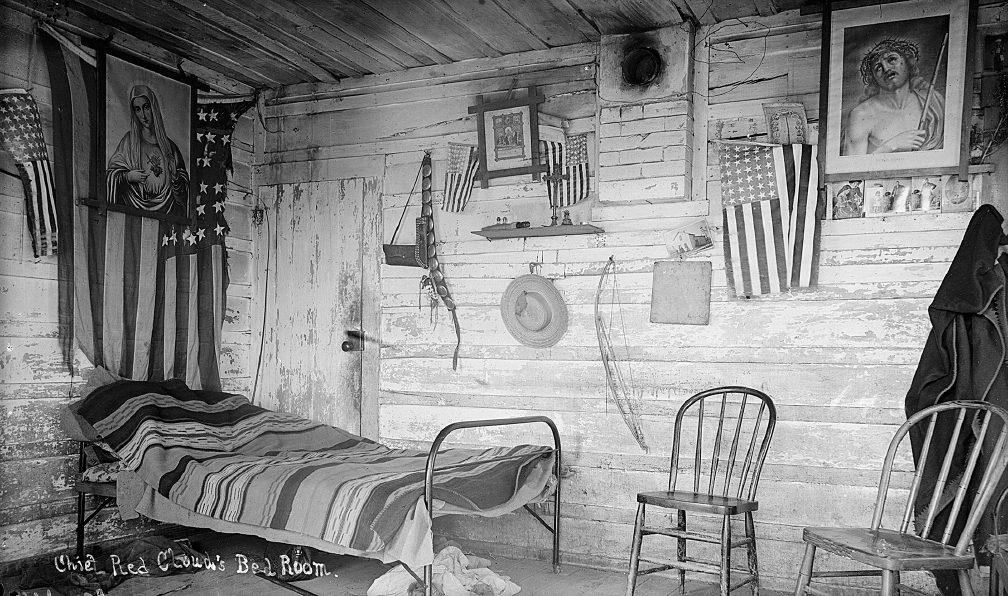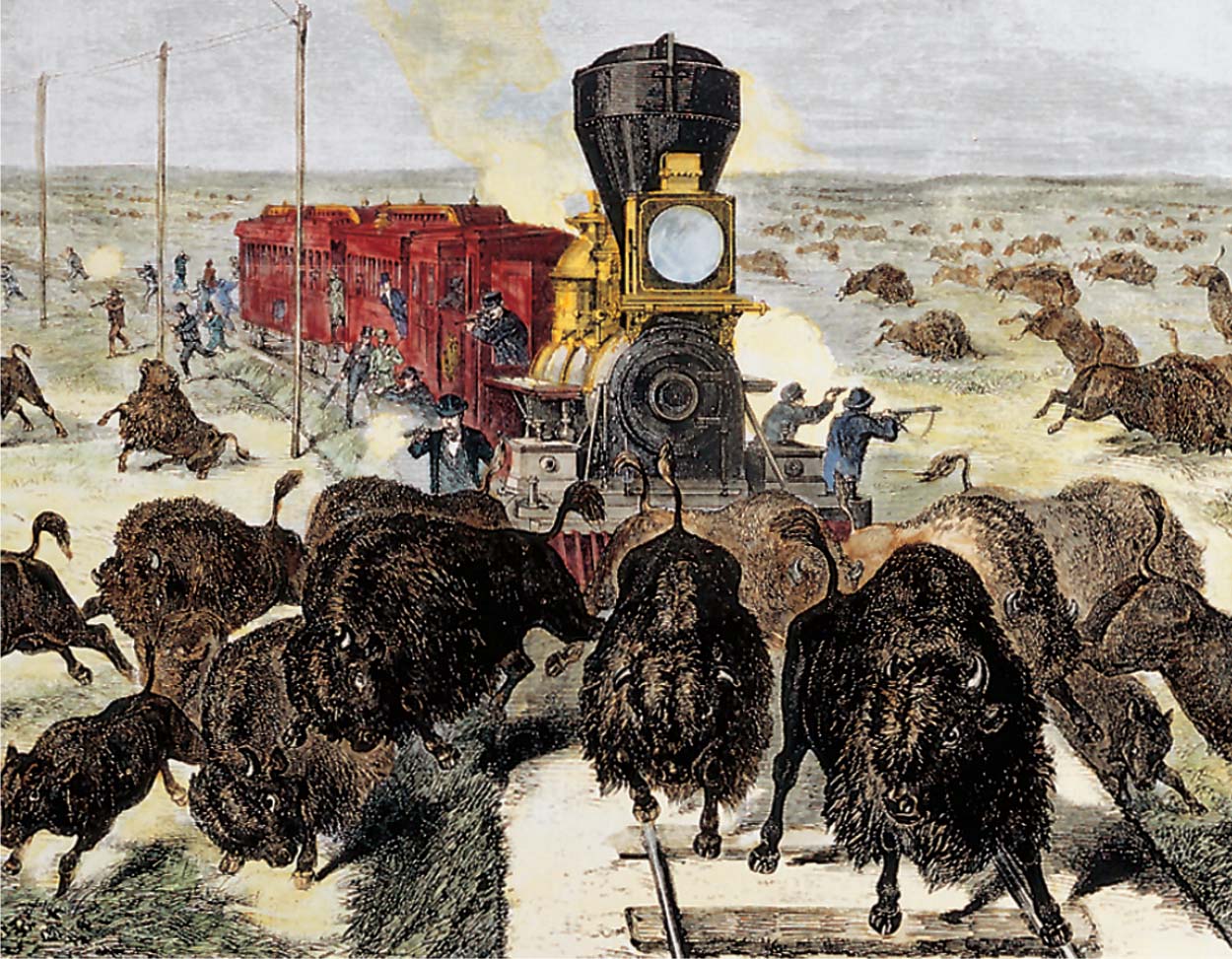America’s History: Printed Page 528
America: A Concise History: Printed Page 485
America’s History: Value Edition: Printed Page 468
Grant’s Peace Policy
Grant inherited an Indian policy in disarray. Federal incompetence was highlighted by yet another mass killing of friendly Indians in January 1870, this time on the Marias River in Montana, by an army detachment that shot and burned to death 173 Piegans (Blackfeet). Having run out of other options, Grant introduced a peace policy, based on recommendations from Christian advisors. He offered selected appointments to the reformers — including many former abolitionists — who had created such groups as the Indian Rights Association and the Women’s National Indian Association.

Rejecting the virulent anti-Indian stance of many westerners, reformers argued that native peoples had the innate capacity to become equal with whites. They believed, however, that Indians could achieve this only if they embraced Christianity and white ways. Reformers thus aimed to destroy native languages, cultures, and religions. Despite humane intentions, their condescension was obvious. They ignored dissenters like Dr. Thomas Bland of the National Indian Defense Association, who suggested that instead of an “Indian problem” there might be a “white problem” — refusal to permit Indians to follow their own lifeways. To most nineteenth-century Americans, such a notion was shocking and uncivilized. Increasingly dismissive of blacks’ capacity for citizenship and hostile toward “heathen” Chinese immigrants, white Americans were even less willing to understand and respect Indian cultures. They believed that in the modern world, native peoples were fated for extinction (Thinking Like a Historian).
Indian Boarding Schools Reformers focused their greatest energy on educating the next generation. Realizing that acculturation — adoption of white ways — was difficult when children lived at home, agents and missionaries created off-reservation schools. Native families were exhorted, bullied, and bribed into sending their children to these schools, where, in addition to school lessons, boys learned farming skills and girls practiced housekeeping. “English only” was the rule; students were punished if they spoke their own languages. Mourning Dove, a Salish girl from what is now Washington State, remembered that her school “ran strictly. We never talked during meals without permission, given only on Sunday or special holidays. Otherwise there was silence — a terrible silent silence. I was used to the freedom of the forest, and it was hard to learn this strict discipline. I was punished many times before I learned.” The Lakota boy Plenty Kill, who at boarding school received the new name Luther, remembered his loneliness and fear upon arrival: “The big boys would sing brave songs, and that would start the girls to crying.…The girls’ quarters were about a hundred and fifty yards from ours, so we could hear them.” After having his hair cut short, Plenty Kill felt a profound change in his identity. “None of us slept well that night,” he recalled. “I felt that I was no more Indian, but would be an imitation of a white man.”

|
To see a longer excerpt of Mourning Dove’s autobiography, along with other primary sources from this period, see Sources for America’s History. |
Even in the first flush of reform zeal, Grant’s policies faced major hurdles. Most Indians had been pushed off traditional lands and assigned to barren ground that would have defeated the most enterprising farmer. Poverty and dislocation left Indians especially vulnerable to the ravages of infectious diseases like measles and scarlet fever. At the same time, Quaker, Presbyterian, and Methodist reformers fought turf battles among themselves and with Catholic missionaries. Many traders and agents also continued to steal money and supplies from people they were supposed to protect. In the late 1870s, Rutherford B. Hayes’s administration undertook more housecleaning at the Bureau of Indian Affairs, but corruption lingered.
From the Indians’ point of view, reformers often became just another interest group in a crowded field of whites sending hopelessly mixed messages. The attitudes of individual army representatives, agents, and missionaries ranged from courageous and sympathetic to utterly ruthless. Many times, after chiefs thought they had reached a face-to-face agreement, they found it drastically altered by Congress or Washington bureaucrats. Nez Perce leader Joseph observed that “white people have too many chiefs. They do not understand each other. … I cannot understand why so many chiefs are allowed to talk so many different ways, and promise so many different things.” A Kiowa chief agreed: “We make but few contracts, and them we remember well. The whites make so many they are liable to forget them. The white chief seems not to be able to govern his braves.”

Native peoples were nonetheless forced to accommodate, as independent tribal governance and treaty making came to an end. Back in the 1830s, the U.S. Supreme Court had declared Indians no longer sovereign but rather “domestic dependent nations.” On a practical basis, however, both the U.S. Senate and agents in the field continued to negotiate treaties as late as 1869. Two years later, the House of Representatives, jealous of Senate privileges, passed a bill to abolish all treaty making with Indians. The Senate agreed, provided that existing treaties remained in force. It was one more step in a long, torturous erosion of native rights. Eventually, the U.S. Supreme Court ruled in Lone Wolf v. Hitchcock (1903) that Congress could make whatever Indian policies it chose, ignoring all existing treaties. That same year, in Ex Parte Crow Dog, the Court ruled that no Indian was a citizen unless Congress designated him so. Indians were henceforth wards of the government. These rulings remained in force until the New Deal of the 1930s.
Breaking Up Tribal Lands Reformers’ most sweeping effort to assimilate Indians was the Dawes Severalty Act (1887), the dream of Senator Henry L. Dawes of Massachusetts, a leader in the Indian Rights Association. Dawes saw the reservation system as an ugly relic of the past. Through severalty — division of tribal lands — he hoped to force Indians onto individual landholdings, partitioning reservations into homesteads, just like those of white farmers. Supporters of the plan believed that landownership would encourage Indians to assimilate. It would lead, as Dawes wrote, to “a personal sense of independence.” Individual property, echoed another reformer, would make the Indian man “intelligently selfish, … with a pocket that aches to be filled with dollars! ”
The Dawes Act was a disaster. It played into the hands of whites who coveted Indian land and who persuaded the government to sell them land that was not needed for individual allotments. In this and other ways, the Bureau of Indian Affairs (BIA) implemented the law carelessly, to the outrage of Dawes. In Indian Territory, a commission seized more than 15 million “surplus” acres from native tribes by 1894, opening the way for whites to convert the last federal territory set aside for native peoples into the state of Oklahoma. In addition to catastrophic losses of collectively held property, native peoples lost 66 percent of their individually allotted lands between the 1880s and the 1930s, through fraud, BIA mismanagement, and pressure to sell to whites.
UNDERSTAND POINTS OF VIEW
Question
How did post–Civil War reformers believe they were improving U.S. Indian policies, and in what ways did that prove to be true and untrue?